How to Blanch and Freeze Vegetables – A Handy Guide
A handy guide for how to blanch and freeze vegetables. If you have fresh veggies that you want to freeze for an extended time, here’s everything you need to know to preserve the fresh flavour, colour and texture of vegetables. This article and the attached guide provides all the answers you need to blanch and freeze vegetables.
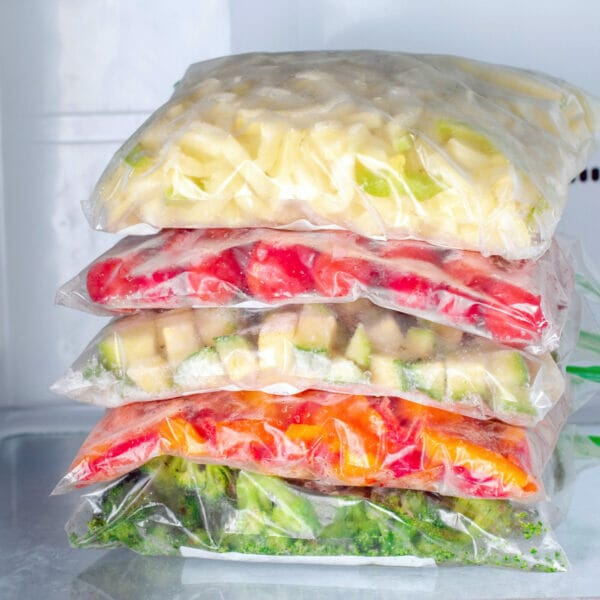
Download your Guide to Blanching and Freezing Fruits &Veggies
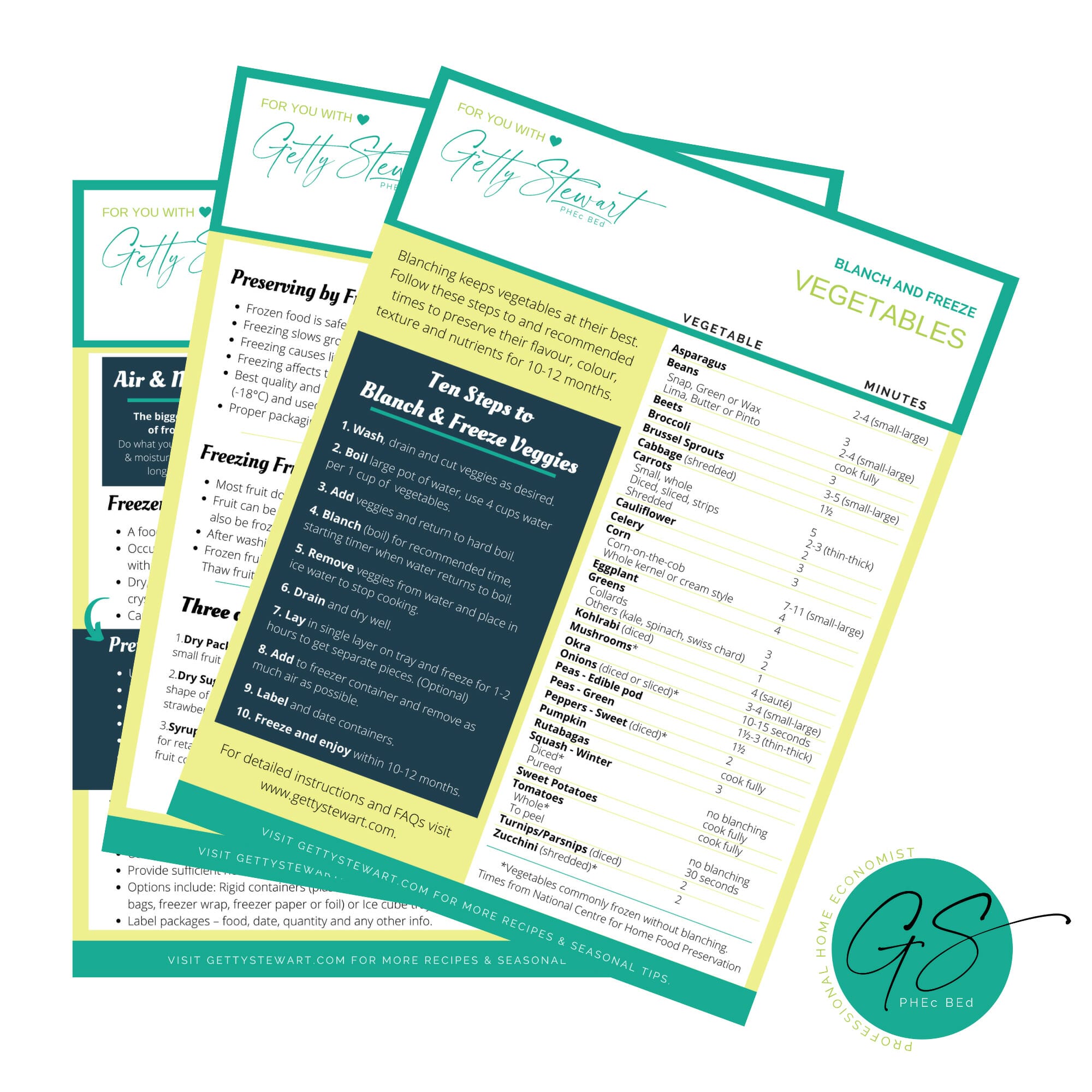
Click to download your copy.
Is Blanching Necessary?
I know you’ve seen articles that say you don’t have to blanch vegetables to freeze them. Don’t trust that information. Sure you can stick anything in the freezer – but what will the taste, colour, texture and nutrients be like by the time you use those veggies? If you remember to use those veggies within a couple of weeks, fine, go ahead and freeze without blanching. BUT if you don’t keep track of when you froze those veggies and want good results months from now – blanch them!
Here’s the deal…
Vegetables contain enzymes that cause them to continue to age after they’ve been picked. That aging process slows down but does not stop in the freezer. So, sweet tender peas will, over time, turn starchy and bitter. Blanching or boiling your veggies for the recommended time (see guide below) stops those enzymes.
The aging process happens to all vegetables. For most vegetables flavor changes become noticeable after about 3 months in the freezer. If you know you will use your frozen vegetables within three months, freezing without blanching would work. I use this rule of thumb when freezing onions – I only freeze as much as I can use within 2-3 months.
Does fruit contain aging enzymes? Yes, it does but the effects are barely noticeable and therefore blanching is not required for fruits – yippee! See more on Freezing Fruit.
Good news…
Blanching is easy! It’s basically dipping vegetables in boiling water for a specified time and then cooling them quickly to stop them from becoming mushy. Timing matters, so follow the recommend times for different vegetables (see guide).
In this article I go through the step by step process of how to blanch and freeze vegetables. I also answer all the questions I’ve ever had in workshops that I’ve given on this topic. Keep reading and do it right!
Want the quick version?
Get the Guide for how to blanch and freeze vegetables. This three page reference guide provides a snapshot of the key information you need to know including the full process, blanching times, tips to avoid freezer burn and even a run down on how to freeze fruits. Just hit the button below and get it in your inbox right away. It’s great for hanging in your cupboard or tucking into your favourite recipe book for quick, easy reference.
Grab your FREE guide to blanching & freezing
How To Prepare Vegetables for Freezing
- Choose fresh, ripe, seasonal vegetables as close to harvest as possible. This will help you lock in the best flavour, colour and nutrients.
- Pick the best veggies to freeze. Eat broken, torn or odd bits right away.
- Wash veggies well and trim away any blemishes.
- Peeling is optional. Do what you would normally do when preparing vegetables. For example, I leave the peel on carrots, but peel squash, sweet potatoes and tomatoes. Tomato peels will separate from tomatoes once thawed and they don’t break down very easily in cooking. If their texture doesn’t bother you – leave them on, if you prefer not to have tomato peels in your sauce, blanch and peel them first. (See more details in my article on Preparing and Canning Tomatoes).
- Think about how you typically use vegetables. What shape and size do you prefer, eg. round carrots or carrot strips? How much do you typically use at one time, eg. 2 cups, 4 cups, etc. This will help you determine how to cut your vegetables and what size of container to freeze them in.
- Cut your vegetables based on the above. Just keep the size consistent for each batch that you’re blanching.
- Unlike most fruits, vegetables do not need to be soaked in lemon juice. (Avocado does, but it’s technically a fruit).

10 Easy Steps to Blanch & Freeze Vegetables
- Wash drain, sort and cut vegetables in the size and shape you prefer. Peeling is optional.
- Bring a large pot full of water to boil. Aim for about 4 cups of water for every cup of vegetables. The high ratio of water to veggies helps bring the pot back to a full boil quickly, without over cooking your veggies.
- Add veggies and return water to a full boil – big bubbles breaking the surface of the water continually.
- Boil for time indicated on the Blanching Guide and as recommended by the National Center for Home Food Preservation. The time varies with each vegetable and how small it’s cut. For example corn kernels only need to be blanched for 4 minutes while whole corn on the cob takes 7 minutes. Follow the guide!
- Shock veggies in an ice water bath or really super cold water to stop cooking process. A good rule of thumb is to leave the vegetables in the cold water for as long as you boiled them.
- Drain and pat dry to remove as much surface water as possible. Excess water will lead to ice formation and reduce the quality of your frozen vegetables. Use a salad spinner or clean towel to remove as much water as possible.
- Freeze based on how you will most likely use your frozen vegetables. For free flowing vegetables like peas or corn, flash freeze vegetables on a baking sheet (see FAQ). For dark leafy greens like spinach, kale, collards or chard try freezing in an ice cube tray for the perfect pucks to add to soups, etc. Or simply place in a container that’s sized well for how you plan to use the vegetables.
- Place in freezer container. If using freezer bags, squeeze out as much air as possible. If you have one, a vacuum sealer is great, but it’s not necessary. To remove extra air, use a straw tucked in one corner to suck out extra air. If using a rigid container, leave 1/2 inch headspace to allow for expansion.
- Label containers and freeze. Include dates to help you keep track of which food should be eaten first.
- Use within one year for best quality. Frozen vegetables are safe to eat well past a year, but the quality will deteriorate quickly after a year.
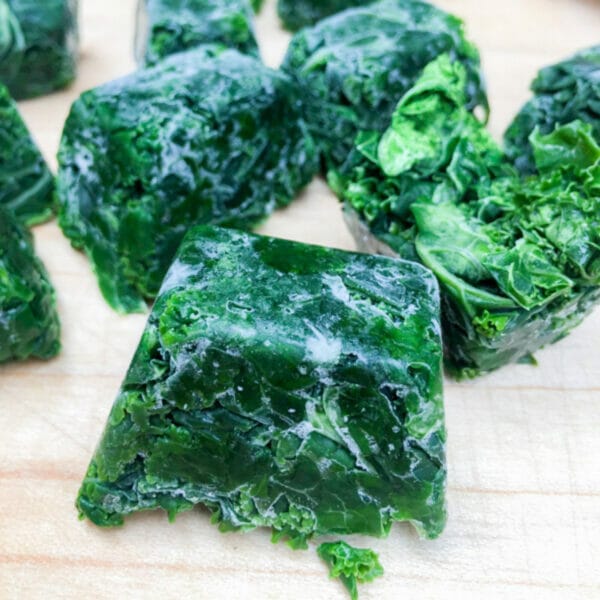
Frequently
Asked
Questions
Have a question that isn’t covered? Let me know in the comments below and I’ll be happy to answer.
I want you to have the best tasting frozen veggies all year long.
Here are a few more tips to help.
Do not add salt or seasoning when blanching or freezing, add them when using the vegetables in a recipe.
Air & Moisture are the biggest enemies of frozen food. Do what you can to prevent these two elements from reaching food for best quality, long lasting food.
If using glass jars in the freezer, use heavy tempered glass that can handle a little jostling. Wide neck jars that have straight sides (no rounded shoulder near the top) are best. And always leave 1 inch head space to allow for expansion.
According to the Ntl Ctr for Home Food Preservation, it is safe to re-freeze thawed food – just expect quality to deteriorate.
The quicker food freezes, the fewer ice crystals which improves long term quality. Choosing smaller containers helps freeze food more quickly and makes frozen vegetables easier to use.
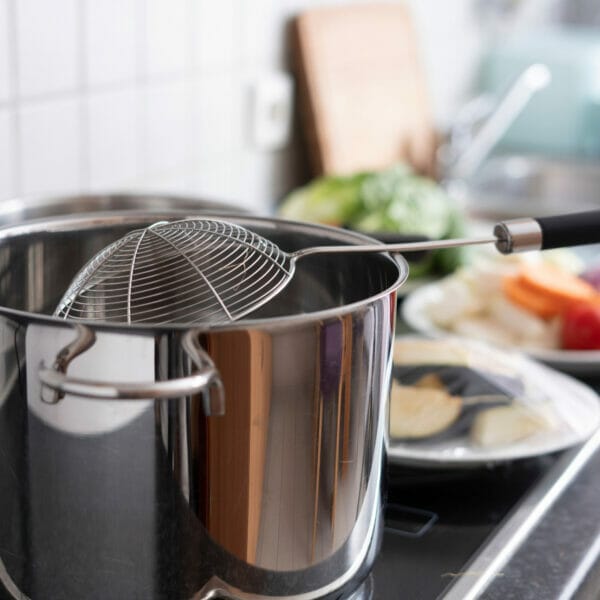
How to Prevent Freezer Burn and Ice Crystals
- Use freezer grade containers/packaging that are the correct size. Vegetables should fit snuggly into the container with as little airspace as possible.
- Remove as much air as possible from packaging when freezing and after each use.
- Remove as much moisture from food as possible before freezing. After blanching or washing, drain and dry with clean towel or salad spinner.
- Close freezers quickly when using.
- Ensure freezer stays at the correct temperature 0°F (-18°C).
- Freeze food in small quantities to promote quicker freezing. Quicker freezing equals smaller and fewer ice crystals which leads to less freezer burn and ice build up. Also, smaller packages thaw quicker and don’t require fussing with an airtight seal when returning the unused frozen vegetables back into the freezer.
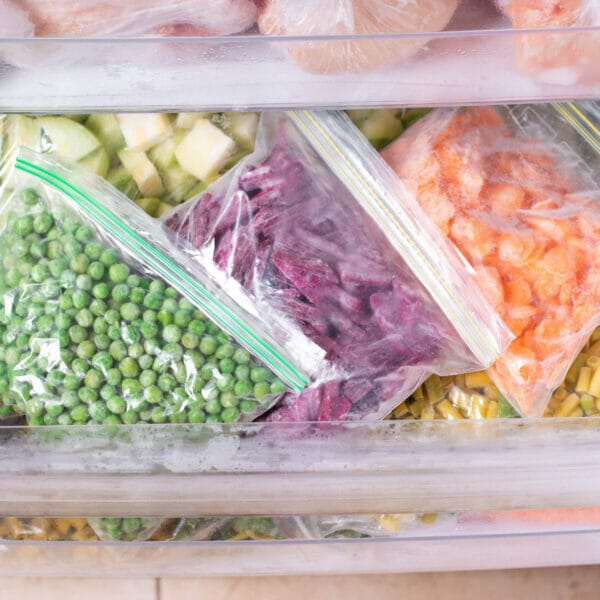
How to Freeze My Favourite Vegetables
For detailed instructions and photos of how to freeze specific vegetables click on the bar below.
Well, there you have it! A complete run down of how to blanch and freeze vegetables. If you have any questions I haven’t addressed, let me know in the comments below. I’ll add it to the list so others can benefit too.
And if you find this information and the handy guide helpful, share your feedback or post a photo on Instagram @GetGettyS or on Facebook @GettyStewart.HomeEconomist.
Original post from 2016, updated with more info in 2022.


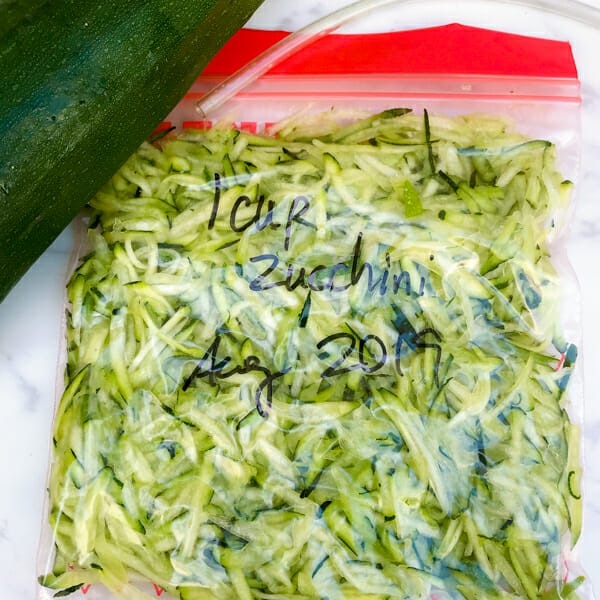

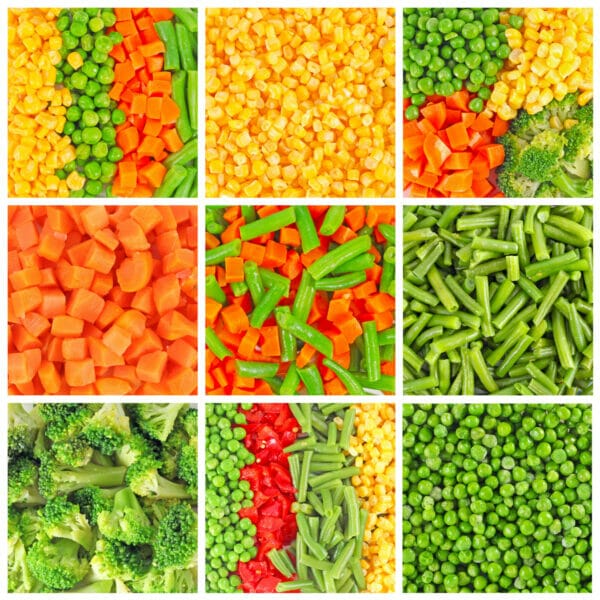
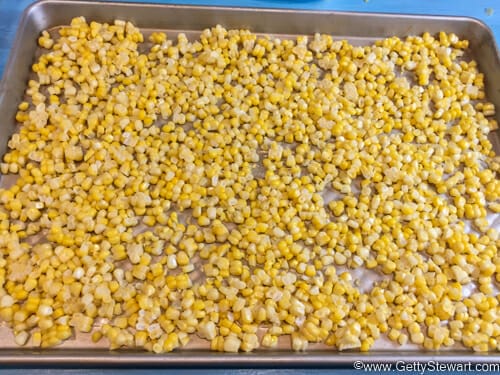
When I left the garlic in the ground too long, I had to use it quickly. I peeled and roasted with olive oil, a complete cookie sheet. Put it into the magic bullet (in batches) with enough olive oil to make paste. Placed tablespoons of the paste on wax paper and froze. Wrapped each ball in cling film, and had bags of roasted garlic for mashed potatoes, garlic bread, stir-fries, etc.
Sounds like a tasty, convenient way to preserve garlic.
Hello! I’m trying to do some prep for Thanksgiving and was going to dice sweet potatoes blanch and freeze them until ready to cook to get some of the prep done. Your chart(which is awesome btw) says to cook them completely how will this change my making the dishon the day? Thank you!
Hi Evelyn,
Good for you for getting a good start on things.
What are you planning to do with the sweet potatoes on Tday? Have you considered pre-making the entire sweet potato dish and freezing that? If you’re planning a mashed dish or casserole of some kind, perhaps you can prep it entirely, seal it well and freeze so it’s ready to pop in the oven. You’d have to thaw it in the fridge overnight. You could even finish baking the dish and then reheat it in the microwave if oven space is going to be hard to come by. Reheating in a crock pot may also be an option.
Good luck and have a Happy Thanksgiving!
Getty